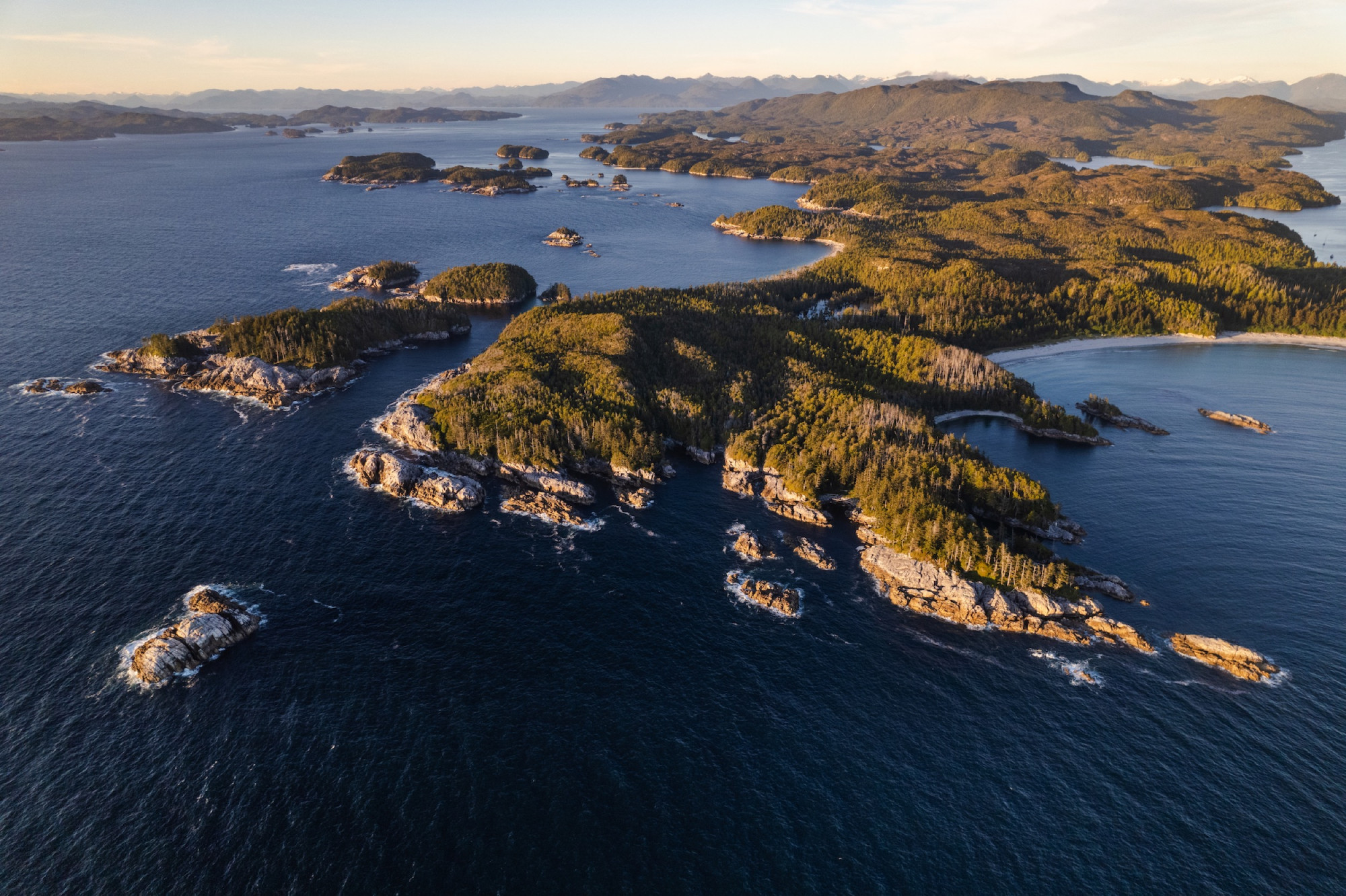Toxic algal blooms—formerly known as red tides—can cause devastation throughout the marine food web. When a species of phytoplankton known as Pseudo-nitzschia seriata is abundant, for instance, herring, clams, mussels, and crabs can accumulate domoic acid from the plankton in their tissues.
In marine mammals and people, domoic acid acts as a neurotoxin that can cause disorientation, memory loss, seizures, and even death, making it very dangerous to harvest traditional foods in First Nations communities. Government agencies in Washington State have closed shellfish beaches and crab fisheries during harmful blooms, while in British Columbia, a lack of monitoring for toxins means that most beaches are closed to shellfish harvesting year-round.
Justin Del Bel Belluz, a biological oceanographer at the Hakai Institute, studies how conditions in the ocean—temperature, salinity, and other factors—affect the diversity and abundance of marine phytoplankton.
“Phytoplankton form the base of the marine food web, so if you have big changes in species or biomass, it definitely perpetuates upward,” Belluz says. “In BC, there are strong ties between spring phytoplankton blooms and fisheries returns and seabird breeding success.”
Though scientists have studied phytoplankton farther up the coast in Alaska, and in the Salish Sea to the south, says Belluz, little is known about these tiny algae on the Central Coast. “A lot of knowledge gaps still exist in this region, and building a baseline understanding of these ecosystems is important considering the level of expected change.”
One important linkage appears to be the relationship between freshwater inputs and the abundance of different types of phytoplankton. Winters on British Columbia’s Central Coast are notoriously rain-drenched, with places like Rivers Inlet—a mainland fjord located roughly 65 kilometers north of Vancouver Island that’s home to the Wuikinuxv Nation—receiving three meters of precipitation in a year. Including meltwater from snow and glaciers flowing off the land, fresh water has a big impact on the region’s marine environment.
In a recent study, Belluz and his coauthors collected phytoplankton and measured ocean conditions at three locations of different distances from the mainland: a fjord site in Rivers Inlet, a site in Fitz Hugh Channel, and a site on the continental shelf, just west of Hakai Pass.
The study linked this biological and oceanographic information with the Hakai Institute’s watershed and weather data, and found that the unique features of the Central Coast shape ocean conditions and the phytoplankton community.
At the Rivers Inlet site, for example, algae bloomed earlier in the spring than Belluz and his coauthors expected; wind data from a nearby weather station suggests that the fjord’s steep walls shelter the area from cold winter winds that delay plankton growth in more exposed locations. Without this sheltering effect, spring blooms in Fitz Hugh Channel and on the shelf require periods of reduced wind and increased sunlight, which is consistent with what researchers have observed elsewhere.
Belluz and his coauthors from Fisheries and Oceans Canada also observed periods when high temperatures and salinity were associated with blooms of the diatoms Pseudo-nitzschia seriata and Rhizosolenia setigera. While not toxic to marine mammals or humans, spiky Rhizosolenia setigera can damage the gills of fish, including Pacific salmon.
As the climate changes, shrinking glaciers will supply less meltwater to the Central Coast during summer months, leaving nearshore areas warmer and saltier. Under these conditions, harmful algae like these could bloom more often.
Climate change models predict that the Central Coast will receive more rain in the fall and winter, with less snowfall at high elevations. Glaciers in the Coast Mountains will continue to shrink. According to a new study coauthored by Hakai Institute affiliate Brian Menounos, glacial ice in Western Canada is melting faster than almost everywhere else in the world.
Over time, as high-elevation snow and ice fields disappear, rivers will lose that essential source of cool fresh water during spring and summer, leaving nearshore areas warmer and more saline. This change could shift the balance from a phytoplankton community dominated by nutritious species like Skeletonema marinoi to harmful ones, such as Pseudo-nitzschia seriata.
“Phytoplankton communities on the Central Coast appear highly sensitive to fresh water,” Belluz says. “So those changing freshwater dynamics could completely alter the base of the marine food web, which currently supports a very productive ecosystem.”


